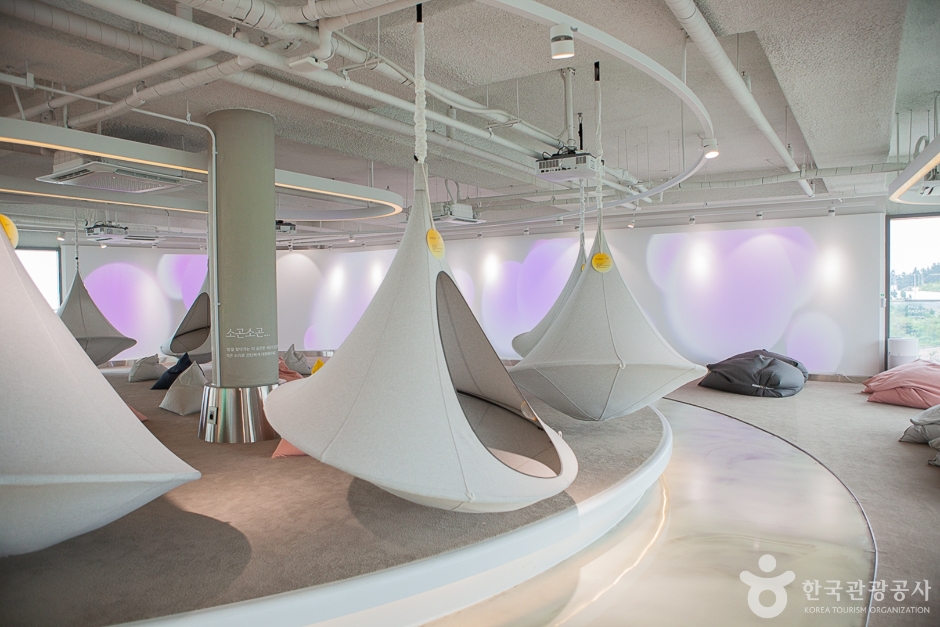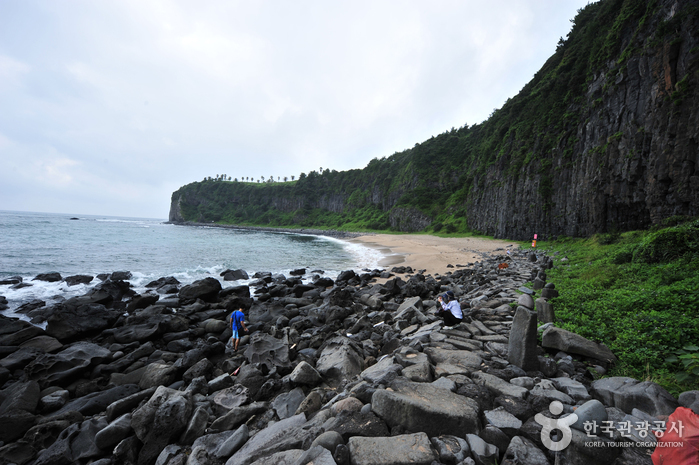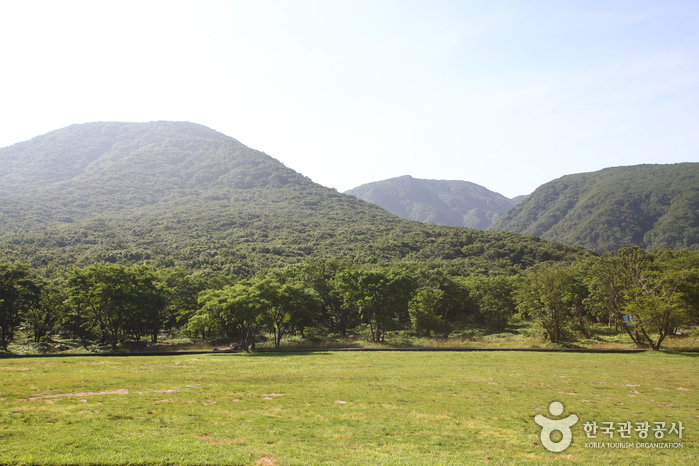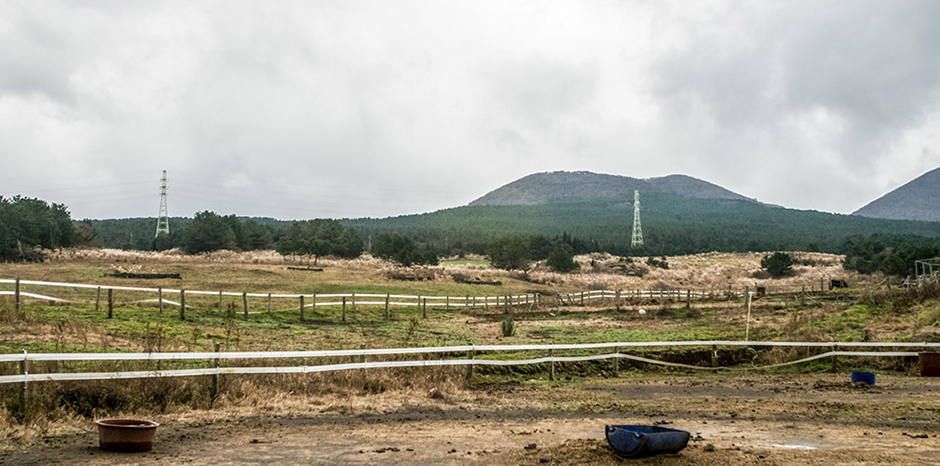Space Zero (스페이스제로)
14.9Km 2024-02-20
880-24 Cheondeok-ro, Aewol-eup, Jeju-si, Jeju-do
Space Zero, situated on the 3rd floor of 9.81 Park, is a café designed for relaxation, as its name implies. Adhering to a one-person-one-drink policy, it offers amenities such as the use of iPads and Nintendo for guests' entertainment. The café's spacious interior is adorned with hanging chairs and beanbags, creating a perfect environment for visitors to either enjoy the view outside the window or unwind in tranquility. The menu includes unique beverages like Space Oddity and citrus ales, as well as aromatic espresso, catering to a variety of tastes.
Jeju Island Special Tourist Zone (제주도 관광특구)
15.1Km 2025-05-20
Jeju-do
+82-64-740-6000
Located to the southwest of the Korean Peninsula, the island of Jeju is Korea's largest tourist destination. The entire island has been designated as a special tourist zone, and it's easy to see why: there is hardly any spot on the island that is not photogenic. Unlike mainland Korea, which has a temperate climate, Jeju boasts a climate that is closer to subtropical. Hallasan Mountain, lying at the center of the island, is surrounded by 368 parasitic cones, known as "Oreum." Eleven beaches have been designated as tourist beaches, but including those that are not officially designated, the island features nearly thirty beaches in total. Famous beaches include Iho Tewoo Beach, Samyang Beach, Hyeopjae Beach, Geumneung Beach, and Gwakji Beach. Jeju's renowned Olle Trails, a system of hiking paths, span a total length of 425 kilometers and would take about fifteen days to complete in their entirety.
Hallasan Mountain [National Geopark] (한라산 (제주도 국가지질공원))
15.3Km 2024-12-03
2070-61 1100-ro, Jeju-si, Jeju-do
+82-64-710-3945
Hallasan Mountain stands proudly at the center of Jeju Island and is perhaps the island’s most memorable landmark. Also called Yeongjusan Mountain, meaning "mountain high enough to pull the galaxy," Hallasan Mountain is widely known by scientists for its geological value. Designated as a national park in 1970, there are 368 parasitic cones called "oreum" (Jeju dialect meaning peak) around the main mountain.
Hallasan Mountain is famous for its vertical ecosystem of plants that results from the varying temperatures along the mountainside. Over 1,800 kinds of plants and 4,000 species of animals (3,300 species of insects) have been identified; to explore the mountain's treasures, simply follow one of the well-developed hiking trails.
Hallasan Mountain Trekking (한라산 트레킹)
15.3Km 2020-06-25
2070-61, 1100-ro, Jeju-si, Jeju-do
+82-64-740-6000
Situated on the southern tip of the Korean Peninsula, Hallasan is 1,950 meters in x_height and is the highest mountain in South Korea. Formed from volcanic activity, the mountain is a dormant volcano made mostly of basalt. Home to the magnificent Baekrokdam (lake-filled crater), the mountainside is covered with alpine flora and lush trees.
The mountain is characterized by majestic cliffs, steep slopes, interesting rock formations, and, in particular, myriads of colorful azaleas. There are over 360 small mountains (uniquely-shaped volcanic mountains called “Oreum” in Jeju dialect) surrounding Halla Mountain that offer new delights to visitors with the coming of each new season. Along with Hallasan, the oreums were officially named the Hallasan Natural Protection Area (Natural Monument No.12) in 1966.
There are six hiking trails along Hallasan. Seongpanak Trail on the east and Gwaneumsa Trail in the north go all the way up to the summit (Baekrokdam). Those looking for a less rigorous hike are advised to take the shorter trails reaching midway up the mountain. All trails are relatively short (less than 10 kilometers) and can be hiked in less than a day. Visitors are advised, however, to start early in the morning if planning on hiking up to the summit and to check official operating hours, as some trails are only open during certain hours of the day. Keep reading for information on some of the most popular trails.
* Gwaneumsa Trail (North)—Summit Trail
Gwaneumsa Trail offers hikers the best view of Hallasan’s deep valleys and stunning terrain. Midway along the trail is Guringul (a lava cave) and Tamna Valley. Tamna Valley is especially beautiful during the fall when the leaves are changing and during the winter when the entire area lays under a dusting of snow.
* Seongpanak Trail (East)—Summit Trail
This relatively long, gently sloping trail is perfect for beginners. Lush broadleaf trees give shade from the beating sun and in spring the azaleas bloom and turn the mountainside into a dazzling array of color.
* Eorimok Trail (Northwest)
This short trail is another relatively easy trail for beginners. In spring, the nearby meadows are adorned with red royal azaleas. From the stone pathway to Mansedongsan visitors can catch a breathtaking panoramic view of the countryside and the island’s signature Oreums.
* Yeongsil Trail (Southwest)
As the shortest trail in Hallasan, this trail boasts Yeongsilgiam (a spectacular cliff with series of unusual rock formations). It is covered with azaleas and royal azaleas in spring and vibrant autumn foliage starting in October.
Altteureu Airfield & Japanese Occupation-Era Hangars (알뜨르비행장 및 일본군 비행기 격납고)
15.5Km 2020-01-29
Sangmo-ri, Daejeong-eup, Seogwipo-si, Jeju-do
+82-64-740-6000
The airfield was built by Jeju-do residents under force by the Japanese army during the Second World War. Visitors can explore the airfield, the control tower, an anti-aircraft emplacement and a hangar at the site. There are relics of the Japanese army and tragic relics of Korea's modern history at 4.3 Historic Site and Jinji Cave in the vicinity to Songaksan Mountain and close to the airfield.
Jeju Equestrian Park (제주승마공원)
15.6Km 2024-05-08
152-1 Nokgome-gil, Aewol-eup, Jeju-si, Jeju-do
Jeju Equestrian Park, nestled in the mid-mountain meadows of Yusuam-ri, Aewol-eup, offers visitors the chance to immerse themselves in the island’s natural beauty on horseback. With the longest trekking course stretching 100 kilometers, the park presents a variety of routes tailored to individual preferences, including horse riding shows, a couples’ riding academy, a children's riding camp, and corporate horseback riding workshops for the perfect equestrian leisure experience. Safety is a top priority, ensured by the best instructors for a comfortable and secure riding experience, making it an accessible adventure for even novice riders.
Jokeunnokkome Oreum Volcanic Cone (족은노꼬메오름)
15.7Km 2024-10-08
482-34 Sallokseo-ro, Aewol-eup, Jeju-si, Jeju-do
Jokeunnokkome Oreum Volcanic Cone gets its name, meaning "little high mountain" in the Jeju dialect, from its size and location near Nokkome Oreum Volcanic Cone. The name could lead to a misunderstanding, expecting this volcanic cone to over an easy hike up; the path is as difficult as any other, but offers stunning views of the nearby area, especially of the larger Nokkome Oreum.
Citrus Museum (감귤박물관)
15.9Km 2024-03-26
441 Hyodonsunhwan-ro, Seogwipo-si, Jeju-do
+82-64-760-6400
Citrus Museum is a themed museum dedicated to tangerines, a specialty of Jeju Island. It showcases the history of tangerines, their varieties, cultivation methods, and tangerine cultivation worldwide. Visitors can also purchase tangerine-related products at the Citrus Experience Center and Museum Shop. From November to February of the following year, visitors can experience tangerine harvesting. The café on the second floor offers various beverages made from tangerines.
Diveland (다이브랜드)
16.0Km 2020-09-10
29, Bomokpo-ro, Seogwipo-si, Jeju-do
+82-10-8696-2187
Diveland is located in the pure waters off the southern coast of Jeju Island. Visitors can enjoy a variety of dive points, including the popular area around Munseom Island.
Hamo Beach (하모해변)
16.0Km 2021-06-24
Choenamdanhaean-ro, Seogwipo-si, Jeju-do
+82-64-760-6000
Hamo Beach is located near Moseulpo Port, and is sometimes referred to as Moseulpo Beach. The beach used to be open for swimming but a variety of issues caused the beach to close for safety. The beach is located along Jeju Olle Trail Course 10, and features a campground nearby. The campground is a paid service and requires advance reservation during peak season. In summer, visitors can enjoy sea walking here, a water leisure sport featuring a diver's helmet. Across from the beach is a field of sunflowers standing before Sanbangsan Mountain.


![Hallasan Mountain [National Geopark] (한라산 (제주도 국가지질공원))](http://tong.visitkorea.or.kr/cms/resource/98/2870098_image2_1.jpg)




 English
English
 한국어
한국어 日本語
日本語 中文(简体)
中文(简体) Deutsch
Deutsch Français
Français Español
Español Русский
Русский